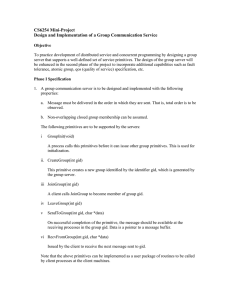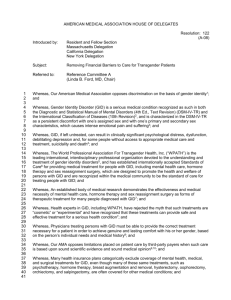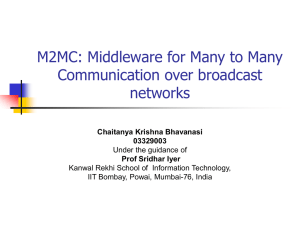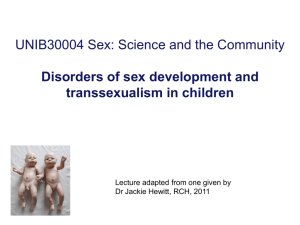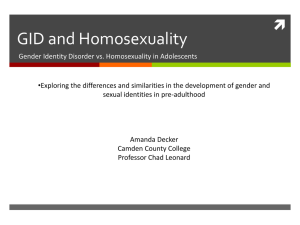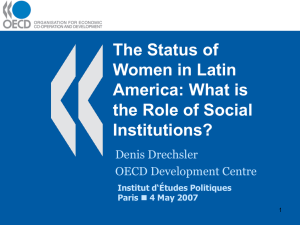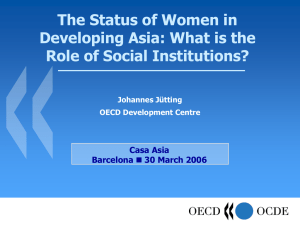Gender Identity Disorder protocol card
advertisement
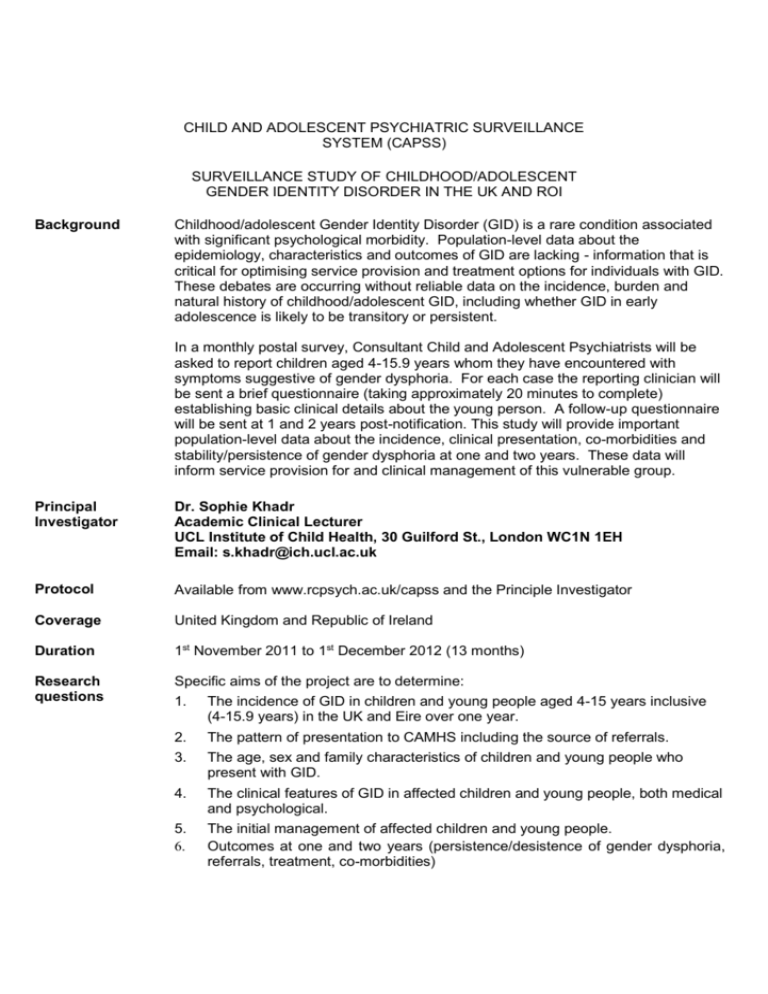
CHILD AND ADOLESCENT PSYCHIATRIC SURVEILLANCE SYSTEM (CAPSS) SURVEILLANCE STUDY OF CHILDHOOD/ADOLESCENT GENDER IDENTITY DISORDER IN THE UK AND ROI Background Childhood/adolescent Gender Identity Disorder (GID) is a rare condition associated with significant psychological morbidity. Population-level data about the epidemiology, characteristics and outcomes of GID are lacking - information that is critical for optimising service provision and treatment options for individuals with GID. These debates are occurring without reliable data on the incidence, burden and natural history of childhood/adolescent GID, including whether GID in early adolescence is likely to be transitory or persistent. In a monthly postal survey, Consultant Child and Adolescent Psychiatrists will be asked to report children aged 4-15.9 years whom they have encountered with symptoms suggestive of gender dysphoria. For each case the reporting clinician will be sent a brief questionnaire (taking approximately 20 minutes to complete) establishing basic clinical details about the young person. A follow-up questionnaire will be sent at 1 and 2 years post-notification. This study will provide important population-level data about the incidence, clinical presentation, co-morbidities and stability/persistence of gender dysphoria at one and two years. These data will inform service provision for and clinical management of this vulnerable group. Principal Investigator Dr. Sophie Khadr Academic Clinical Lecturer UCL Institute of Child Health, 30 Guilford St., London WC1N 1EH Email: s.khadr@ich.ucl.ac.uk Protocol Available from www.rcpsych.ac.uk/capss and the Principle Investigator Coverage United Kingdom and Republic of Ireland Duration 1st November 2011 to 1st December 2012 (13 months) Research questions Specific aims of the project are to determine: 1. The incidence of GID in children and young people aged 4-15 years inclusive (4-15.9 years) in the UK and Eire over one year. 2. The pattern of presentation to CAMHS including the source of referrals. 3. The age, sex and family characteristics of children and young people who present with GID. 4. The clinical features of GID in affected children and young people, both medical and psychological. 5. 6. The initial management of affected children and young people. Outcomes at one and two years (persistence/desistence of gender dysphoria, referrals, treatment, co-morbidities) Case Definition BOTH the following criteria (1 and 2) should be fulfilled: 1. A strong cross-gender identification for ≥ 6 months (i) In children <12 years, this requires 2 or more of the following: a) b) c) d) (ii) In adolescents 12 years, this requires 1 or more of the following: a) b) c) 2. In boys, preference for cross-dressing or simulating female attire; in girls, insistence on wearing only stereotypical masculine clothing; Strong preferences for cross-sex roles in make-believe play or fantasies of being the other sex; Intense desire to participate in stereotypical games/pastimes of the other sex; Strong preference for playmates of the other sex. a) Frequent passing as the other sex (adopts clothing, hairstyle of the other sex) Desire to live and be treated as the other sex Belief that their feelings and reactions are typical of the other sex Distress or unhappiness with his/her biological sex (e.g. Stated dislike of/aversion to or self-inflicted injury to their primary or secondary sexual characteristics, request for physical intervention to alter their physical sexual characteristics to those of the other sex) OR b) Stated desire to be or belief that he/she is or should be the other sex Exclusions: (i) GID cannot be diagnosed in children with known intersex conditions (disorders of sexual differentiation) (ii) Major psychotic disorder in which gender is one element of a wider delusional system. Please include cases where gender identity is the only identified “delusion”. Reporting instructions Please report any child/young person aged 4-15 years inclusive (i.e. 4-15.9 years) meeting the case definition criteria below for the first time in the last month. If the clinician is uncertain or awaiting confirmation, the child should still be reported. Methods Using a monthly postal survey, Child and Adolescent Psychiatrists will be asked to report any new cases of GID meeting the criteria above. Notifications will be followed up with a brief questionnaire about the young person’s socio-demographic and clinical details. A brief follow-up questionnaire will be repeated at 1 and 2 years. Ethics approval The study has been approved by London Bloomsbury REC (ref.11/LO/1512) and the National Information Governance Board under Section 251 (ECC 8-02(FT4)/2011). Funding Tavistock & Portman grant via the Advisory Group for National Specialised Services Reference Wallien MSC & Cohen-Kettenis PT. Psychosexual outcome of gender dysphoric children. J Am Acad Child Adolesc Psychiatry. 2008;47(12):1412-1423
